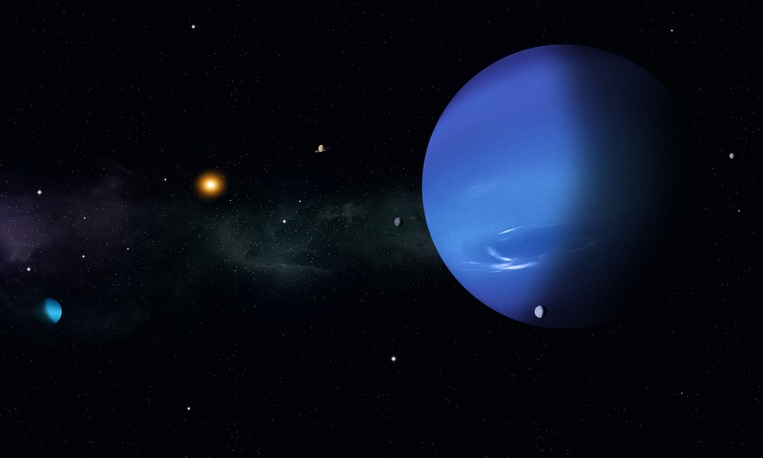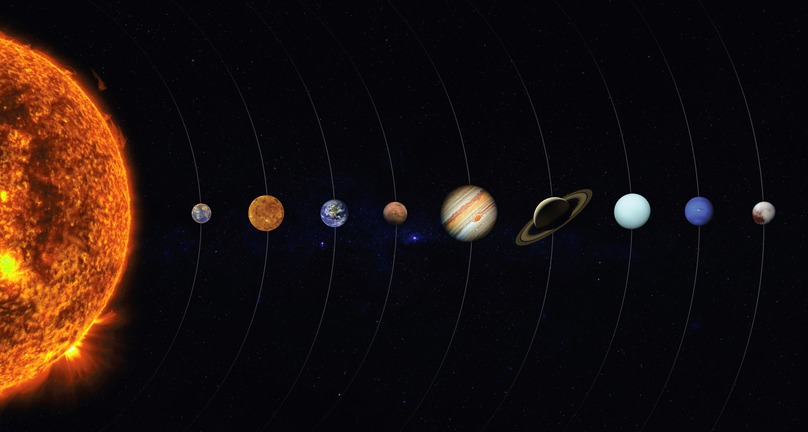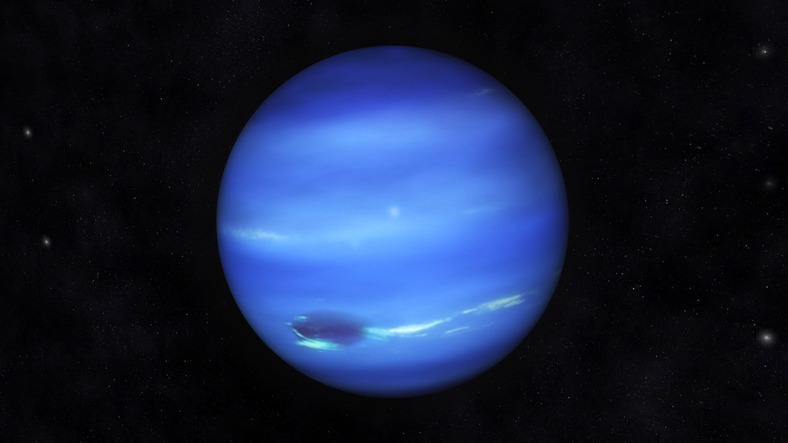Neptune is one of the most fascinating and mysterious planets in our solar system. It’s often called the “dark planet” because it’s difficult to see with telescopes. Even though we’ve known about Neptune for centuries, we still know very little about this distant planet. In this blog post, we’ll explore some of the most interesting facts about Neptune!
Learn More about Neptune
Before going into some interesting facts, let’s look into details and learn more about this massive planet. Neptune is about four times larger than the size of Earth and has a mass of almost 57 Earths. It’s one of the four gas giants in our solar system, along with Jupiter, Saturn, and Uranus. Neptune orbits around the sun every 165 Earth years and has an average temperature of -218 degrees Celsius!
Now that we have an overview of this gas giant, continue reading below for some interesting facts about Neptune.
Neptune has a Surface Gravity Similar to Earth’s
Despite being much larger than Earth, Neptune has a surface gravity that is only 17% stronger. This means that on Neptune, you would weigh only about 17% more than you do on Earth.
Neptune has a Thick Atmosphere
One of the most famous features of Neptune is its thick atmosphere. The atmosphere is made up of hydrogen gas, helium gas, and methane gas. It’s so thick that it’s difficult to see the planet’s surface from Earth.
Neptune has a Fast Rotation Rate
Unlike other planets in our solar system, Neptune rotates very quickly. It completes one rotation on its axis every 16.1 hours on Earth days! This fast rotation rate causes the planet to have a pronounced equatorial bulge.
Neptune Has Many Moons

Neptune has 14 known moons, which is more than any other planet in our solar system. The largest moon is Triton, which is about the size of Earth’s moon. Triton was discovered by William Lassell in 1846, just a few weeks after Neptune was discovered.
Here are the fourteen moons found in Neptune:
- Triton
- Nereid
- Proteus
- Larissa
- Galatea
- Despina
- Thalassa
- Halimede
- Sao
- Laomedeia
- Neso
- Psamathe
- Naiad
- Hippocamp
Neptune’s Temperature Range is Extreme
The temperature range on Neptune is extreme. The planet’s surface temperatures can vary from -224 degrees Celsius to +32 degrees Celsius! This huge variation in temperature is caused by the planet’s thick atmosphere, which acts as a blanket that traps heat near the surface.
Neptune’s Magnetic Field is Stronger than Earth’s
Neptune’s magnetic field is much stronger than Earth’s. It’s about 27 times stronger, which is enough to protect the planet from the harsh solar wind.
Neptune Was the Last Planet in Our Solar System to be Discovered
Although Neptune was discovered in 1846, it was not officially recognized as a planet. This was because it was difficult to observe Neptune with telescopes, and many people believed that it was just another star. Neptune was the last planet in our solar system to be discovered. However, this is still a common cause of confusion since Pluto was reclassified as a dwarf planet in 2006.
It is Still Unclear Who Discovered Neptune
Despite being fully recognized as a planet, it is still an ongoing debate as to who is the person credited with Neptune’s discovery. There are three people who have claimed to be the discoverer of Neptune: John Couch Adams, Urbain Le Verrier, and Johann Gottfried Galle. It’s still not clear which person is actually responsible for the discovery.
NASA Succeeded in Visiting Neptune Once
Although Neptune is difficult to observe from Earth, NASA was able to visit the planet once. In 1989, the Voyager II spacecraft passed by Neptune and took some amazing photos of the planet’s atmosphere and moons. This was the first and only time that a spacecraft has ever visited Neptune.
Neptune is also Full of Rings
Just like Saturn, Neptune is also known for having rings around it. However, Neptune’s rings are not as visible as Saturn’s rings, and they were only discovered in 1984.
Neptune is the Fourth-Largest Planet in Our Solar System
With a diameter of 49,244 kilometers, Neptune is the fourth-largest planet in our solar system. Neptune is about four times larger than the size of Earth and has a mass of almost 57 Earths.
Neptune is the Planet Furthest from the Sun

As of 2016, Neptune is the furthest planet from the sun. It’s located about 30 astronomical units (AU) away from the sun. One AU is equal to the distance between Earth and the sun. This means that it takes Neptune over 164 years to orbit the sun!
Neptune was Named After the Roman God of the Sea

In Greek mythology, Neptune was the god of the sea. The planet was named after him because it is often seen as a blue-green color, similar to the ocean.
Neptune has the Most Powerful Winds
Wind it comes to extreme winds, Neptune is definitely number one in our Solar System. The winds on Neptune can reach speeds of up to almost 2000 kilometers per hour! This is because the planet’s fast rotation rate causes the atmosphere to rotate quickly.
Neptune is the Smallest Compared to Other Gas Giants
Neptune may be a massive planet, but it is relatively small compared to others of its kind. For example, Jupiter is almost twice as large as Neptune. This is because Neptune is an “ice giant,” meaning that it is made up of more ice than gas.
Neptune is Unable to Support Life
A lot of people might already know that Neptune is unable to support life. This is because the planet doesn’t have a solid surface, and it’s constantly covered in clouds made of ammonia and methane. These gases are poisonous to humans and other forms of life.
Final Thoughts
Neptune is a fascinating planet with many interesting features. Some of these include its strong magnetic field, rings, and powerful winds. Additionally, Neptune was the last planet in our solar system to be discovered and is named after the Roman god of the sea. Although it’s not possible for life to exist on Neptune, NASA was still able to visit it one time in 1989. All of these facts make Neptune an interesting planet to learn about!
